Ever stop to think about how Earth's colossal mountains came to be? Take the Himalayan mountain range in Asia, for example, containing more than 3,000 named peaks, one of which - mount Everest in Nepal - is the tallest on the planet. Better yet, how did some of the world's profound underwater structures form? For instance, the Mariana trench contains the deepest location on Earth.
In addition to the above, Interesting Engineering (IE) walks you through the geological processes that cause earthquakes to occur, as well as what causes magma to erupt from a volcano as lava. Fundamentally, all the above relate to two words: convergent boundaries.
What are convergent boundaries?
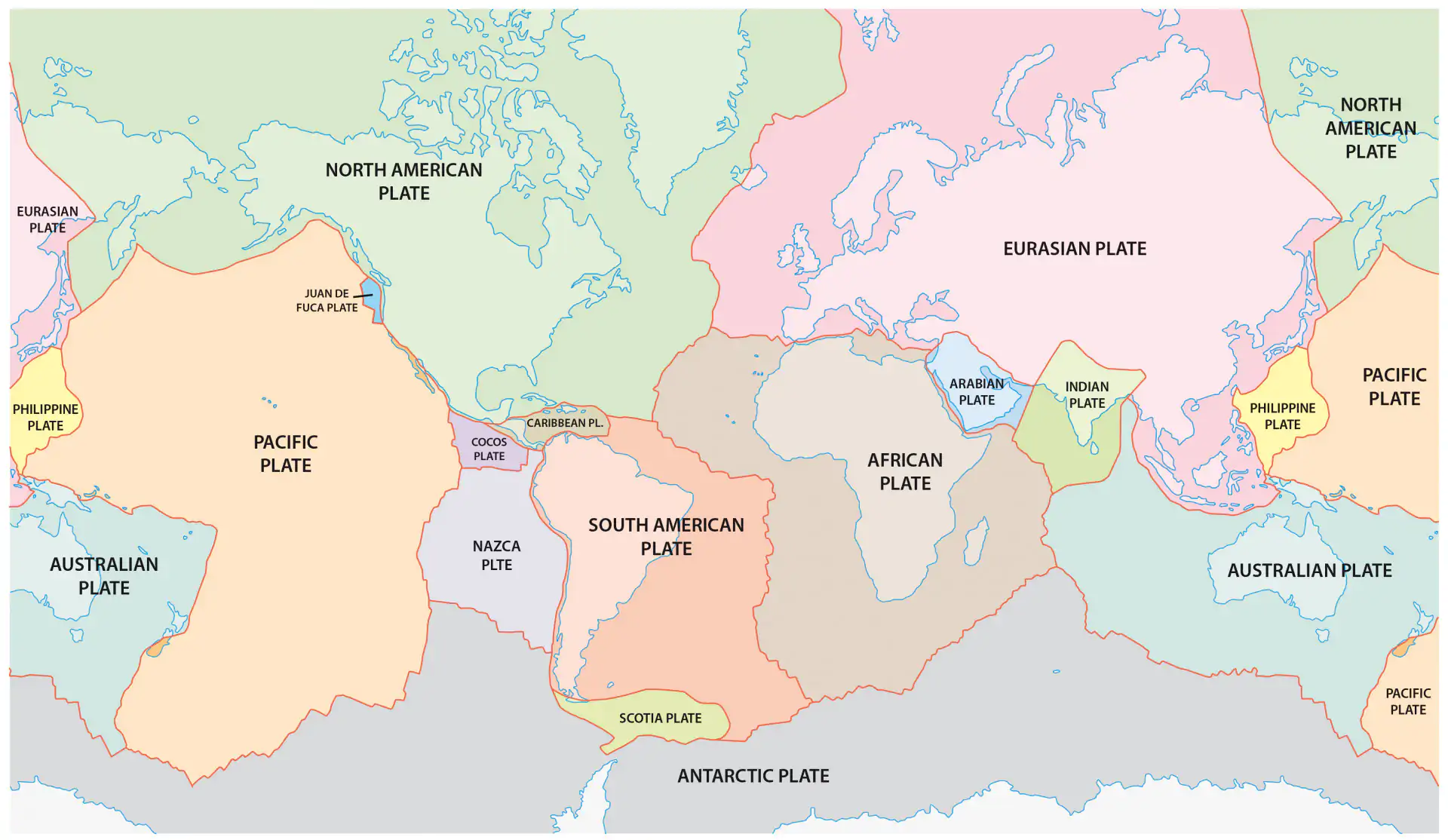
Rainer Lesniewski/ iStock
The existence of convergent boundaries relates to Earth's surface being divided into seven major and eight minor tectonic plates. These plates are made up of sections of Earth's crust and uppermost mantle, which together are referred to as the lithosphere.
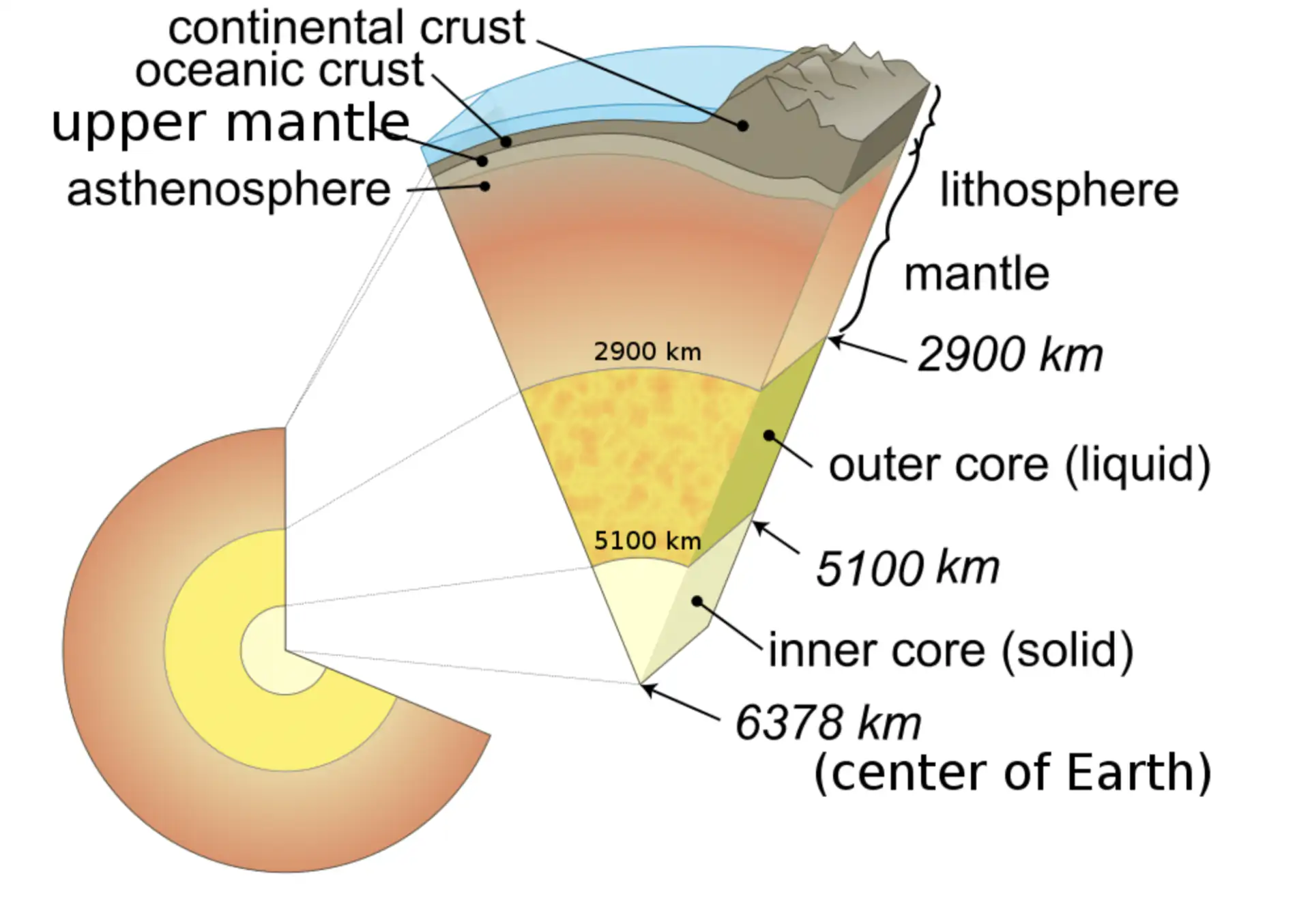
Srimadhav/Wikimedia Commons
The tectonic plates are constantly moving (at up to about 4 inches, or 10 centimeters, per year). Based on their composition, these plates can be described as 'continental' or 'oceanic'.
Continental plates are often 30–50 kilometers thick, whereas oceanic ones are only around 4–10 kilometers thick. The latter is constant because it is denser. As a result, oceanic plates can be subducted (pushed downwards).
Areas of plate motions relative to each other are described as 'plate boundaries.' Simply put, a convergent boundary is when two or more plates collide (converge) with each other.
When tectonic plates collide, in some cases, the thicker, less dense plate overrides the thinner, more dense plate, triggering a process called "subduction." This is when one of the plates gets forced down into the higher-temperature environments of the mantle.
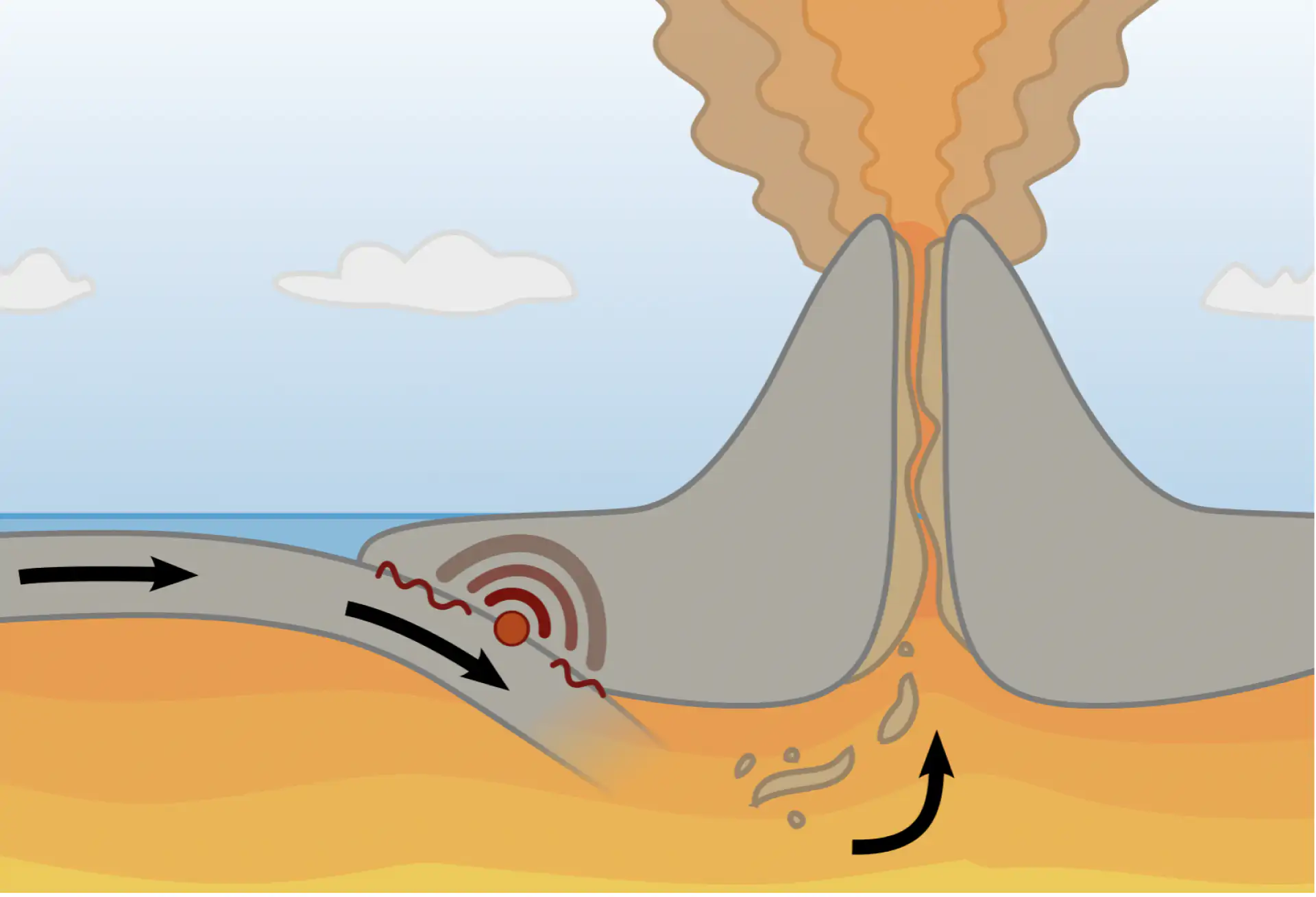
?var Arnfjor? Bjarmason/ Wikimedia Commons
Materials in the subducting plate start to reach their melting points at a depth of about 100 miles (160 kilometers), as partial melting starts to take place. When this happens, intense heat and magma chambers are generated above it. In some cases, a magma chamber rises to the surface without solidifying. In that case, the magma will break through as a volcanic eruption.
Geologists can determine the location of convergent plate boundaries as well as the size of their associated magma chambers by plotting the earthquake activity around them. This is done using a technique called seismic tomography.
What do convergent boundaries form?
Convergent boundaries may result from the following plate collision scenarios: continental-continental, continental-oceanic, and oceanic-oceanic. These give rise to different geological features on our planet, such as deep ocean trenches, active volcanoes, arcs of islands along the tectonic boundary, and in some cases, mountain ranges.
Continent-continent convergent boundary
A continental-continental collision happens when two continental plates collide with each other. In contrast to continental and oceanic plate collisions, colliding continental surfaces are too light (i.e., typically composed primarily of granite rocks made up of interlocking crystals of minerals such as alkali feldspar and quartz). This means it is unlikely one will be subducted under the other.
Instead, massive deformation of the pre-existing continental rocks takes place, pushing the material upwards and leading to the formation of mountains.
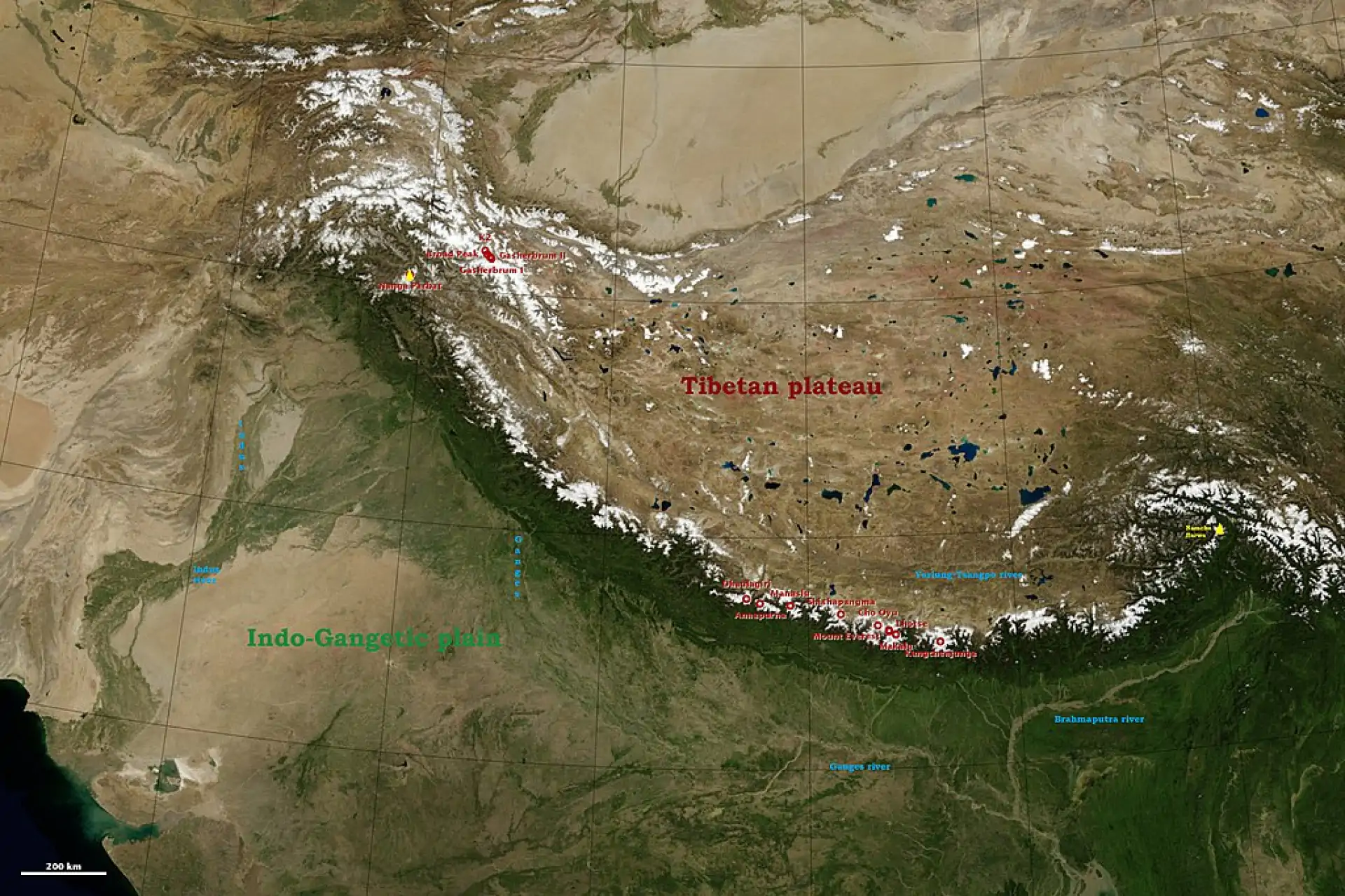
NASA Landsat image/Wikimedia Commons
The formation of the Himalayan Mountains serves as an example of this. began to form when the two continental plates, Indian and Eurasian, collided with each other between 40 and 50 million years ago.
Additionally, the collision of the African Plate with the Eurasian Plate formed the mountain ranges we know today as the Alps. These two plates began to advance toward one another sometime around 100 million years ago, closing the ocean basins in their path until they collided.
Ocean-ocean convergent boundary
During an ocean-ocean convergent boundary formation, one of the plates is moved, or subducted, under the other. The subducted plate is generally older, colder, and often denser than the overlying younger, warmer plate.
Many times at this boundary, an ocean trench is formed. The subducted plate sinks into the hot mantle at a relatively narrow-angle near the subduction zone, then at steeper slopes (up to 45 degrees Celsius) further down.
As the subducting plate heats up, a considerable quantity of water vapor is released which is added to the hot mantle. This decreases the melting point of the plate, causing the formation of magma.
The magma, being less dense than the mantle layer around it, eventually ascends to the ocean floor, where it forms an island arc, which is a chain of volcanic islands. As more volcanic material is ejected and sedimentary rocks gather around the islands, a mature island arc begins to develop into a chain of larger islands (just like the islands of Japan and Indonesia).
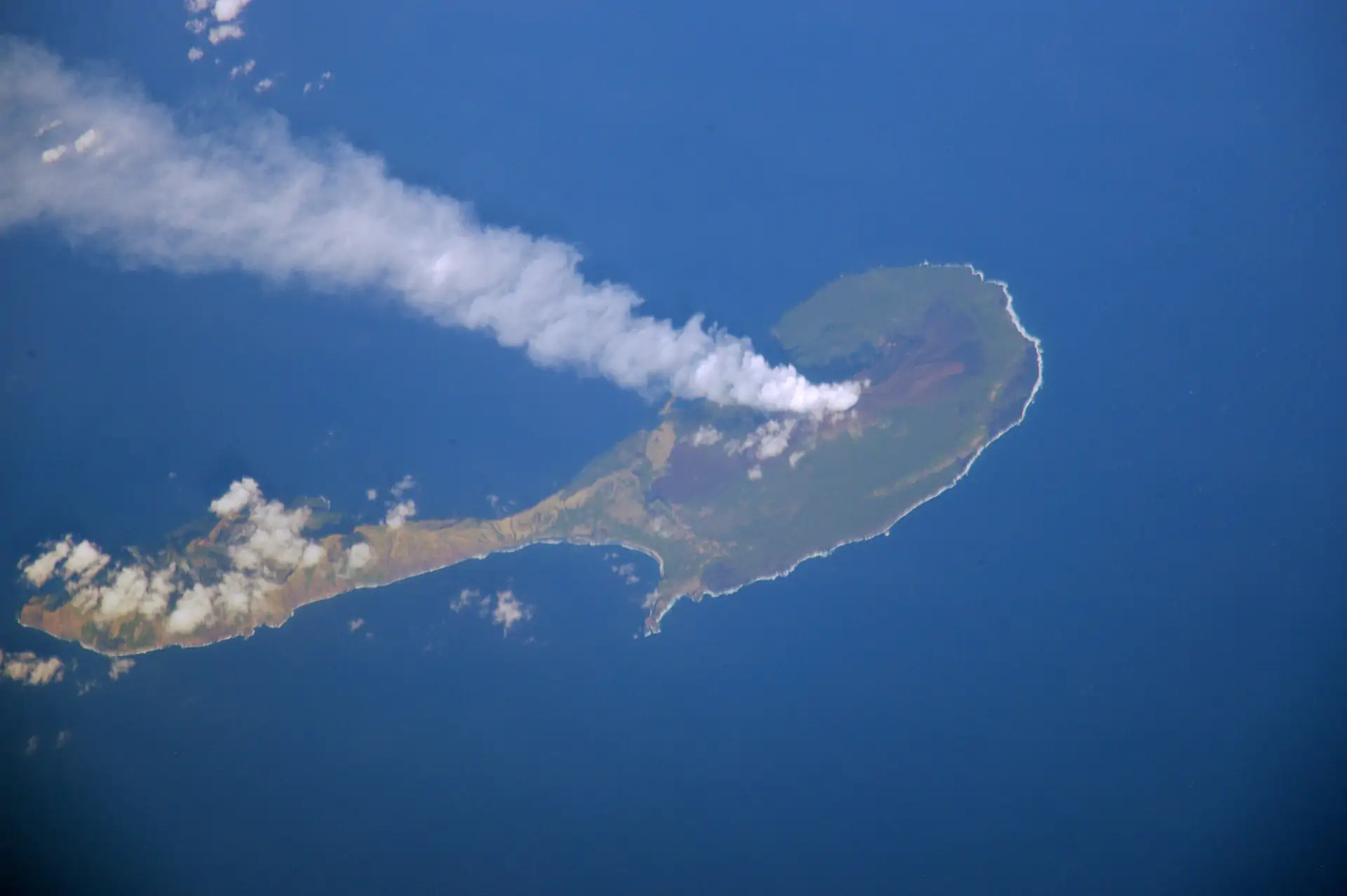
NASA/Wikimedia Commons
The Aleutian Trench is a convergent plate boundary that extends for 3,400 kilometers (2,100 mi) along the southern coastline of Alaska and the Aleutian islands. At this location, the Pacific Plate is subducting beneath the North American Plate at a nearly 45-degree angle.
Furthermore, subduction at the Mariana trench, the deepest location on Earth (11,034 meters deep, or 7 miles), has been going on for over 50 million years. Here, the Pacific Plate subducts under the Philippine Plate, and the volcanism produced by this formed the Mariana Islands- a chain containing both active and dormant volcanoes.
Ocean-continent convergent boundary
At an ocean-continent convergent boundary, the more dense oceanic plate is pushed beneath, the less dense continental plate, similar to the ocean-ocean boundary.
Sediment gathered on the seafloor is pushed up into an accretionary wedge, and compression causes movement within the continental plate. The area adjacent to the subduction zones produces magma that comes up to the continental plate, which melts the plate's rocks.
This magma eventually emerges through the plate (lithosphere) and is responsible for producing a chain of mountains enclosing many volcanoes.
Like an ocean-ocean boundary, the subducting crust can form a deep trench along the coastline.

atosan/iStock
The subduction of the oceanic Nazca Plate under the continental South American Plate created the Andes Mountains- the world's longest continental mountain range along South America's western border. This ocean-continental subduction zone also formed the Peru-Chile Trench.
Additionally, the subduction of the oceanic Juan de Fuca Plate under the continental North American Plate formed the Cascade Range. This is a prominent mountain range in western North America that stretches from northern California through the states of Washington, Oregon, and southern British Columbia.
Features and Effects of Convergent Boundaries

USGS/Wikimedia Commons
Along convergent plate boundaries, large earthquakes occur often. Since convergent boundaries surround the Pacific Ocean, this region is where 80 percent of all earthquakes occur - also known as the Ring of Fire.
In subduction zones, the converging plates often become buckled. Sometimes the pressure in the rock formations that they are composed of accumulates until they fracture. Suppose the fracture occurs along hundreds of kilometers of the subduction zone. In that case, a megathrust earthquake can be triggered, forcing one tectonic plate beneath the other.
Additionally, 75 percent of all volcanoes in the world occur along the Pacific Ring of Fire. The world's most active volcano, Kilauea, is located here. It has been erupting on and off since 1983. On November 28, 2022, the nearby Mauna Loa volcano, the world’s largest active volcano, also began erupting for the first time in 40 years, ending that volcano's longest recorded period of quiet.
A continental volcanic arc, such as the Andes Mountains in South America, might form at oceanic-continental boundaries where subduction occurs beneath a continent.
Since continental tectonic plates have similar densities, often neither of them subducts. Instead, the two plates rise together and form mountain ranges, also known as 'fold mountains' where the crust above the plates has been deformed.
For example, it is believed that the section of crust now forms the Appalachian mountains began folding over 300 million years ago when the North American and African continental plates collided.
Deadly natural disasters

WikiImages/Pixabay
Convergent boundary processes have caused some of the deadliest natural disasters in human history.
The devastating 2004 Indian Ocean tsunami that killed approximately 200,000 people was triggered by an undersea megathrust earthquake that registered a magnitude of 9.1–9.3 Mw (moment magnitude). It is now known that the earthquake was caused by a fracture along the subduction zone between the Burma Plate and the Indian Plate.
Additionally, a magnitude 9.0 megathrust earthquake along the convergent boundary of the Eurasian plate and the Pacific Plate caused the 2011 tsunami off the coast of Japan, killing 16,000 people and causing US$360 billion worth of damage.
Tsunamis are caused by the seafloor rising or falling along a subduction zone deep beneath the ocean during high-magnitude earthquakes. The seafloor may move by as little as one meter (3 feet), causing the entire water column above to rise or fall.
When a fault line is near populated areas, it can take just a few minutes from the moment of an earthquake until the first tsunami hits the seashore. People who live in low-lying areas are particularly vulnerable to tsunamis.
Very little continental lithosphere is destroyed in the mantle because it rarely subducts. Although continental crust can be weathered and eroded over time by the Earth's atmosphere and hydrosphere, some have survived for billions of years. As a result, geologists can reconstruct our planet's early history using clues from rocks on our continents.
 SHOW COMMENT (1)
SHOW COMMENT (1)


A new study by Dr. Michael Wong of the Carnegie Institution for Science and Caltech’s Dr. Stuart Bartlett proposes a possible solution to the Fermi Paradox.

 The Cairo Sketches: Too good to be true wonders of AI
The Cairo Sketches: Too good to be true wonders of AI
 Soon you can take a portable version of the Earth's magnetic field to outer space
Soon you can take a portable version of the Earth's magnetic field to outer spaceIn a first, researchers discovered a rare mineral that comes directly from Earth's lower mantle

Backyard Scientist’s rocket-knife hits the target at 400mph



